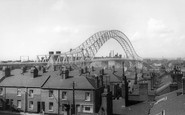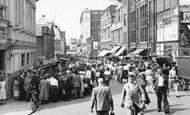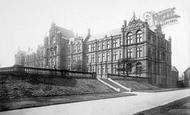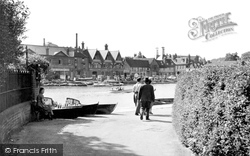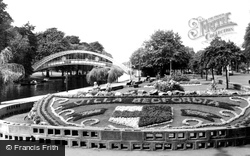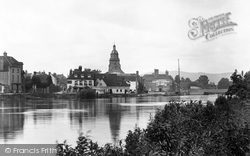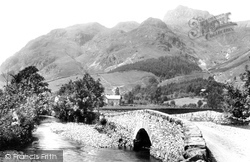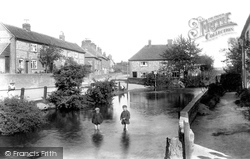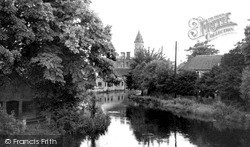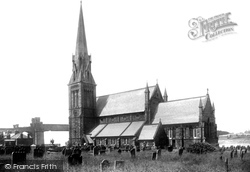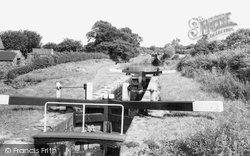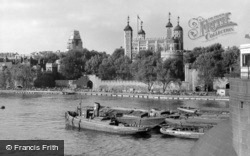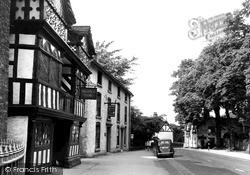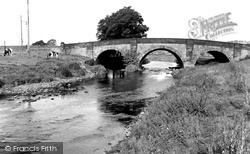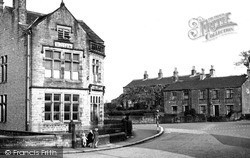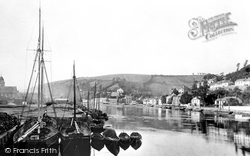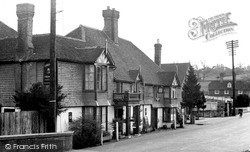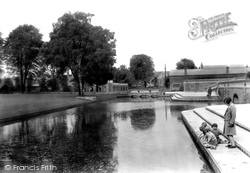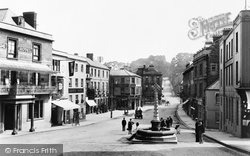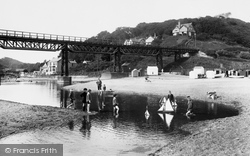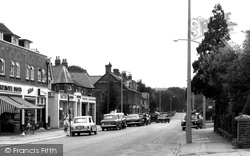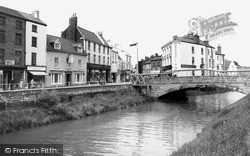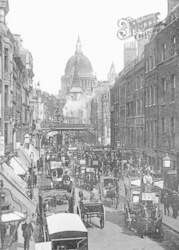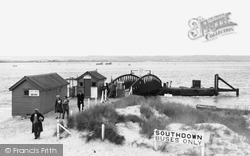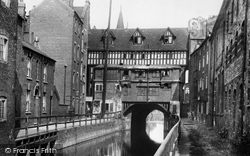Places
17 places found.
Those places high-lighted have photos. All locations may have maps, books and memories.
- Bridge End, Oxfordshire
- Bridge End, Lincolnshire
- Bridge End, Essex
- Bridge End, Bedfordshire
- Bridge End, Clwyd
- Bridge End, Warwickshire
- Bridge End, Surrey
- Bridge End, Durham (near Frosterley)
- Bridge End, Northumberland (near Hexham)
- Bridge End, Hereford & Worcester (near Tirley)
- Bridge End, Hereford & Worcester (near Bosbury)
- Bridge End, Shetland Islands
- Bridge End, Cumbria (near Carlisle)
- Bridge End, Northumberland (near Hexham)
- Bridge End, Devon (near Kingsbridge)
- Bridge End, Devon (near Sidmouth)
- West End, Yorkshire (near Pateley Bridge)
Photos
40 photos found. Showing results 1,241 to 40.
Maps
520 maps found.
Books
2 books found. Showing results 1,489 to 2.
Memories
1,928 memories found. Showing results 621 to 630.
School Days
We lived in Langrish village, but seeing there was no school there we had to take the public bus to East Meon School. I remember the first and last days at junior school in East Meon. The school building was made from local flint ...Read more
A memory of East Meon in 1950 by
Old Row.
Old Row, Golds Hill, does anybody remember the pub called The Boat on Canalside next to Old Row? I know that Old Row was pulled down in 1936 and the pub was de-licensed by 1938, that was when my grandparents lived there, the Mcdonalds, we ...Read more
A memory of Golds Green in 1930 by
The Bridge
I lived in Southbank Terrace when the bridge was under construction. Daily we would watch each new piece of steel be erected, always wondering what tomorrow would bring. The biggest disappointment we had was when the bridge opened, we were ...Read more
A memory of Runcorn in 1965 by
Kennards, Grants And Allders
I was born in 1950, and only left when I married in 1973. I remember the donkey rides in Kennard Arcade in the 50's - they had little bells on their harnesses and for sixpence you could have a ride which seemed like for ...Read more
A memory of Croydon in 1955 by
Growing Up
I was born on the 24th of July 1929 above a shop next to a pub called the Rose of Denmark, in Hotwells, Bristol, very convenient for Father to wet his whistle and my head at the same time. Father was born in 1893, Mother in 1895. They ...Read more
A memory of Bristol in 1930 by
Days By The River
Hi, Just looking at some old family photos of us fishing by the Swans Neck at Birlingham back in the early 60s when I was about 12. I come from Birmingham and the place my father worked was Mitchells and Butlers brewery who ...Read more
A memory of Birlingham by
Thornbury Road, Osterley And Spring Grove Central School, Isleworth
I was born at West Middx. Hosp in 1940. Christened at St. Mary's Church, Osterley. I lived in Syon Park Gardens until I was 34. I remember Thornbury Road and can remember some of ...Read more
A memory of Osterley by
Fulham Girl
I lived in Burlington Road, at No.1 - it was called Jubilee Terrace, and was built to commemorate one of Queen Victoria's Jubilees. There was a pottery at the New Kings Rd end of Burlington Road which was built way back in the reign of ...Read more
A memory of Fulham in 1955 by
Our Gang
I was born in Russel Place off Hankinson St. We had cockroaches all over the house and there was 8 kids & 2 adults in a 2up 2down. We had no money & my dad was a gambler & a violent man. In 1952 we were rehoused to Corby ...Read more
A memory of Salford in 1953 by
I Remember Growing Up Here 1962 67
I used to live up the Station Road, No. 3 Broome Close, about 150yds past the post office on the left. Lord Plymouth estates built 2 new houses in the early 60's, we moved from the stable flats in Oakley Park and ...Read more
A memory of Bromfield in 1964 by
Captions
1,770 captions found. Showing results 1,489 to 1,512.
The 1870 view of the bridge is particularly interesting, for it shows the Berkshire bank before the spread of late Victorian developments that brought large houses and villas to the Berkshire hillside
The inclined floral bed in the foreground survives, and is planted each year with a different theme. The concrete block walls replaced railings lost during the Second World War.
Apart from vinegar-making, the site of several skirmishes for control of the bridge during the Civil War, and an old church with an oddly-shaped tower, Upton's other claim to fame is that Henry Fielding
The Langdale Pikes are among the Lake District's most popular and recognisable hills.
Since then and the completion of the M25, the twin tunnels are one way; vehicles crossing from the Essex side use the graceful Queen Elizabeth II suspension bridge which soars above the river.
Lord's Mill was one of the main watermills along the Chess south-east of Chesham and is behind the photographer who is looking over the Moor Lane bridge parapet.
From the Bridge 1899 A town when the Domesday Book was compiled, and a settled place as far back as the 7th century, Fordwich was a flourishing port on the River Stour for Canterbury when the river was
The view from this bridge has changed significantly in the last 50 years.
Just to the left of All Saints' Church the Railway Bridge can be clearly seen standing where Queen Ethelfleda's castle was built to control and watch the Runcorn Gap and protect her kingdom
The Macclesfield Canal passes through the outskirts of Congleton, complete with an elegant iron aqueduct where it crosses Canal Street, and several attractive bridges.
As we look from Tower Bridge, the dominance of William the Conqueror's White Tower keep, dating from the late 11th century and still the focus of the castle, is now somewhat reduced by office blocks, including
The view down the street in 1950 is not greatly different from 50 years before, although a car has replaced the pony and trap.
This bridge over the River Aire linking Silsden and Steeton was built in 1806 at a cost of £3529; it opened up trade between Wharfedale and Airedale.
The imposing Bridge House, with a datestone of 1883 (left), was originally the Conservative Club; it was later used as a youth club, and was restored in 2003 and converted into business premises.
port, Looe declined with the coming of the railways, though it continued to maintain a fishing fleet; there were also exports of granite from local quarries, which was used for harbours, breakwaters and
The Chequers pub leads to the bridge over the river Teise; beyond that is the George and Dragon pub, which was rebuilt in 1882 after a fire destroyed the old inn.
The river to the east of the church has been widened and landscaped, and bridges built to the north and south of the Churchyard.
The town, built in oolitic limestone, is a most attractive one: its streets curve up and down hill picturesquely.
It was a popular place for holidays, even though the village had been spoiled not only by the ruins of an alum works, but by an iron bridge that carried the railway line between Whitby and Saltburn.
The hump on the horizon was the railway bridge, since levelled for a busy roundabout with five exits.
There are roads along each bank and houses face the river, giving it a slightly Dutch feel. Indeed, there are some fine Georgian houses, particularly on the east side near the good parish church.
A train has just left Holborn Viaduct Station and thunders south over the bridge, steam ballooning out over the roofs. Below, traffic crawls miserably up Ludgate Hill.
Note the sign for Southdown Buses, and a reminder that the last boat sails at 8.45 (left). The island railway opened in the 1860s, crossing to Hayling from Havant over a wooden bridge.
The High Bridge timber-framed buildings had got into a deplorable state by the 20th century, and were extensively restored and rebuilt in 1900 by William Watkins, who also added the three dormer windows
Places (17)
Photos (40)
Memories (1928)
Books (2)
Maps (520)



